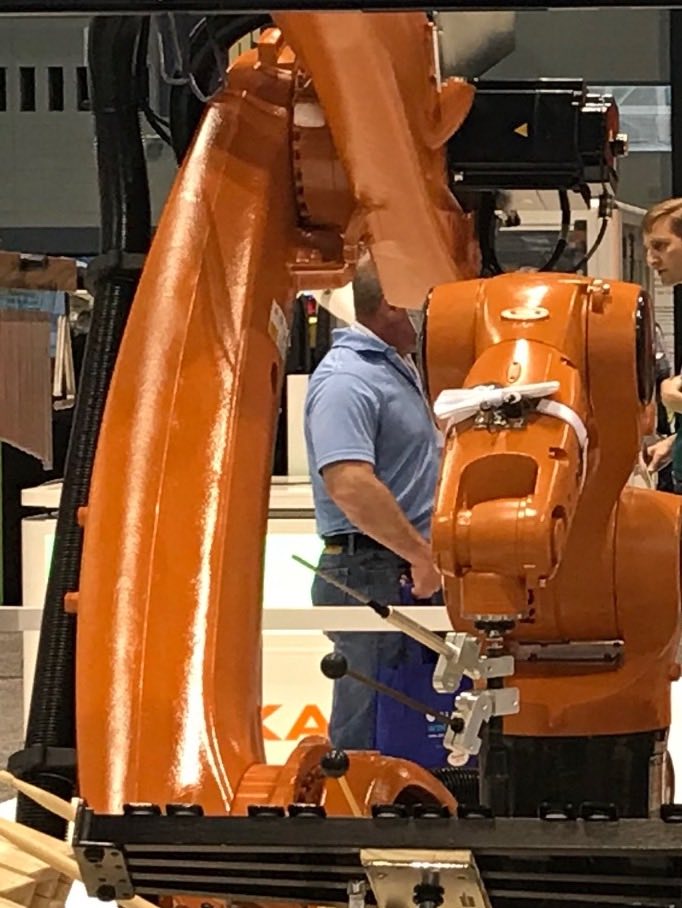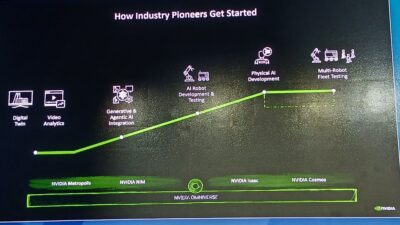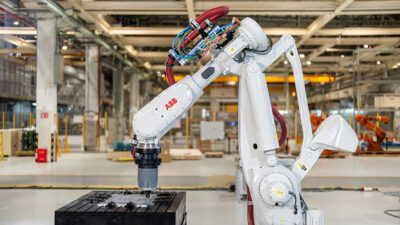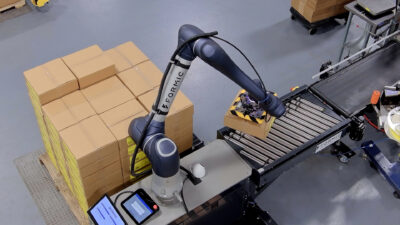Collaborative robots are useful for CNC machine tending applications because they can be deployed quickly and can improve productivity on the plant floor.

Machine tending is the process of loading and unloading parts into a computer numerical control (CNC) machine. Traditionally, this process has been completed manually by a human worker. Over time, machine tending has proven to be repetitive and potentially dangerous for workers, and manufacturers are having an increasingly difficult time finding workers willing to tend machines.
Manual machine tending processes are slower, less accurate and less consistent. Collaborative robots offer a promising solution for more effective machine tending.
There are many reasons why a collaborative robot is particularly useful for CNC machine tending applications. First of all, collaborative robots feature fast deployment that reduces integration costs and allows for easy change-overs when a different task needs to be automated. Easy programming further enhances the speed of deployment and redeployment.
Collaborative robots generally come at a much lower price point than industrial robots. This allows manufacturers to rapidly accrue return on investment (ROI) to start seeing productivity benefits right away.
The benefits of collaborative robots in CNC machine tending applications
The most immediate and impactful benefit of using collaborative robots in CNC machine tending applications is their ability to ramp up productivity. For cutting, routing, grinding, or milling, collaborative robots operate with far greater levels of uptime than human workers, translating to significantly higher throughput. When this factor is considered alongside the enormous cost savings generated by collaborative robots, the result is higher productivity.
In addition to higher productivity, collaborative robots tend to introduce greater levels of safety in operations. They allow human workers to focus on other more cognitive-oriented tasks that are safer, and typically have robust features to avoid harmful collisions. When compared to industrial robots that need safety fences and extensive safety equipment, collaborative robots are small and take up very little space on the shop floor.
Collaborative robots are ideal for CNC machine tending applications. They’re safe, productive, and they allow human workers to focus on more value-added tasks in production. CNC machine tending can be inconsistent and a bottleneck in production when applied manually. Collaborative robots help manufacturers ramp up productivity for greater competitiveness on a global scale.
This article originally appeared on the Robotics Online Blog. Robotic Industries Association (RIA) is a part of the Association for Advancing Automation (A3), a CFE Media content partner. Edited by Chris Vavra, production editor, Control Engineering, CFE Media, [email protected].



